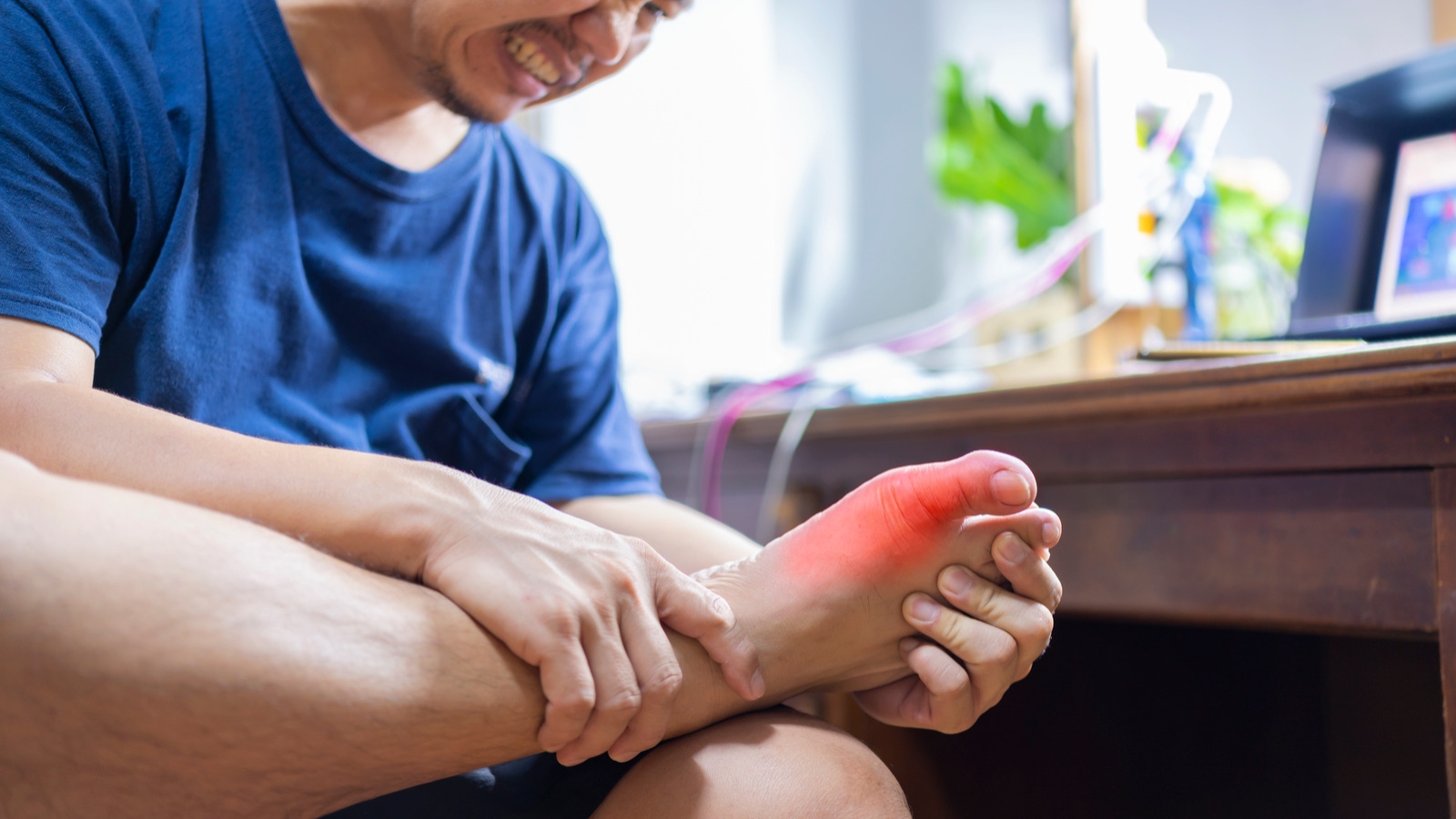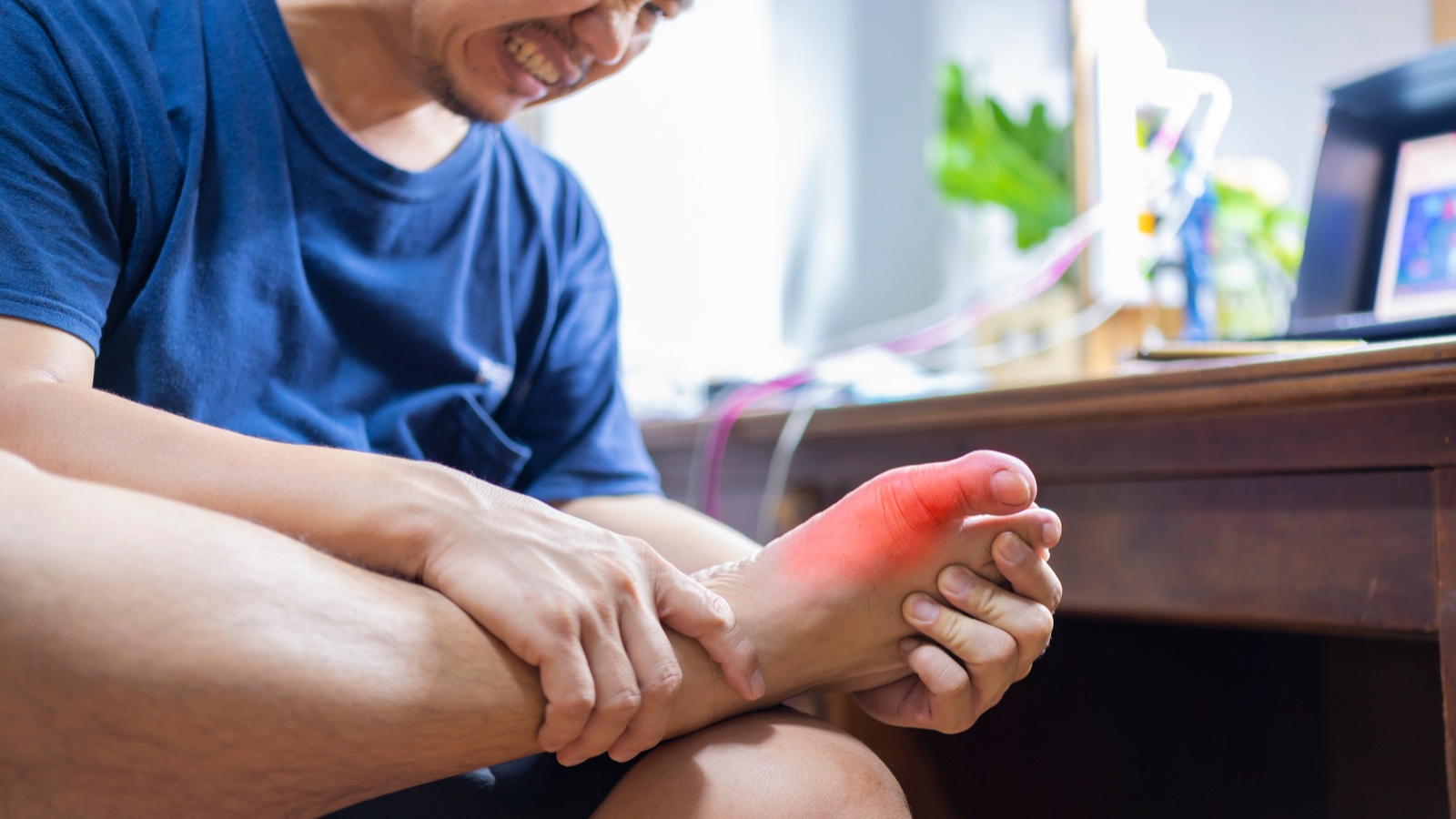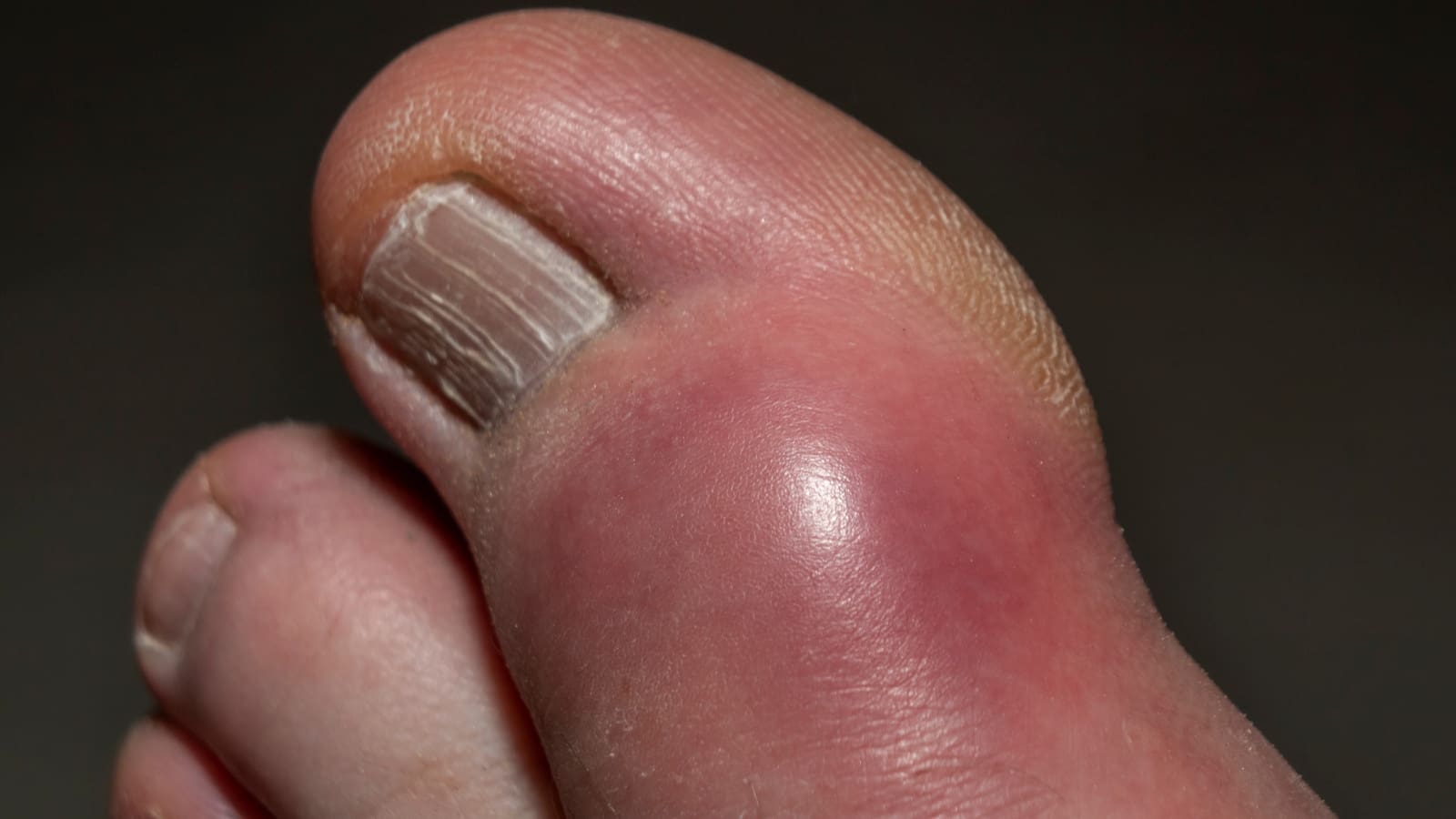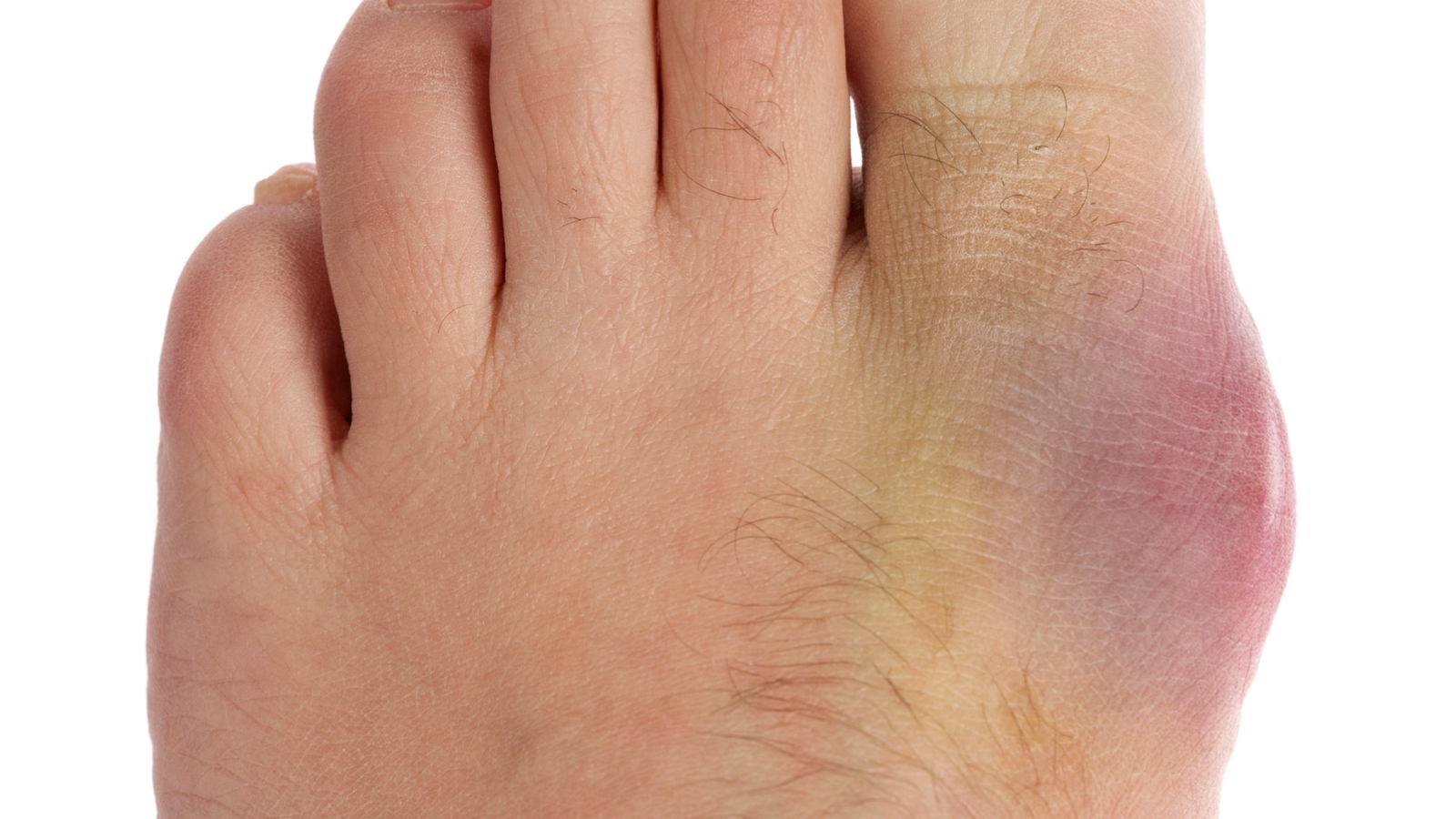Join The Nantwich Clinic Club to keep up to date with news and offers!
Sign Up
Gout is a form of inflammatory arthritis that affects approximately 2% of the population of the UK. It happens when your blood contains too much uric acid (which is a natural byproduct that the body produces). In most cases, the uric acid that your body produces is passed out of the body through the kidneys and into your urine, but in some cases the body makes more than the kidneys can handle and this imbalance of uric acid in the body form hard crystals around the joints, this is known as hyperuricemia.

Gout pain can flare up and cause pain in almost any joint, but generally it affects the joints at the end of the limbs like your toes, ankles, knees and finger, but the big toe is the most commonly affected joint. A flare up can occur suddenly and without any warning at all and be extremely painful and debilitating, but there are ways to relieve the symptoms and prevent further attacks in the future.
To try and help those who are living with gout, or concerned that they may be experiencing gout symptoms in their feet, we’re taking a deep dive into what gout does to the feet.
As we already mentioned, gout happens due to a built up, excess amount of uric acid in the blood or hyperuricemia. While hyperuricemia is the most prevalent risk factor for the development of gout, it only causes gout in approximately 75% of cases.
When the body breaks down substances known as purines it produces uric acid. The uric acid is passed through the bloodstream and into the kidneys where they remove it through your urine, but when the kidneys cannot remove enough of it, crystals can form within the joints and soft tissues which causes swelling and pain.
Unlike other forms of arthritis which can cause a dull and chronic aching pain, a gout flare up is generally much less subtle and occurs as a sudden and stabbing pain in the affected joint. In your mind, picture a selection of different sized shards of glass sticking out of the joint of your toe like needles. Now picture all of these shards pressing outwards as if they are trying to force their way out through the skin, and this is what gout often feels like.

Well, first off the bat your gender is actually a risk factor when it comes to gout and it typically affects more men than women (although after the menopause the risk of gout attacks does increase due to an increase to uric acid levels). Another naturally occurring risk factor is your age, with the chance of developing gout increasing as you get older.
Medical conditions such as increased blood pressure, diabetes and any kidney related issues or disease can also pose an increased risk to gout. It can also be affected by certain types of medication such as diuretics and aspirin, as these are known to increase the levels of uric acid in the body.
There are also a number of risk factors that you are able to control as well, such as your weight and diet. Being overweight is directly linked to an increase in the risk of developing gout, and eating certain foods that are high in purines can also raise uric acid levels. Things you should avoid include;
On the other hand though, there are certain things that you can eat to help to reduce your uric acid levels. Studies have shown that eating cherries, regularly drinking coffee and eating foods that contain vitamin C all have positive effects in either lowering the levels of uric acid or helping the body to excrete it.

So we know now what causes gout and what the symptoms are, and it all relates to how the body is either producing too much uric acid or not getting rid of it effectively. Psuedogout, also known as calcium pyrophosphate deposition disease, is a problem that poses similar symptoms with pain and swelling in the joints but there are some key differences.
For starters, pseudogout isn’t caused by a build up of uric acid crystals, instead like their alternate name suggests they are caused by a build up of calcium pyrophosphate crystals. They also are not triggered by eating specific foods, such as those that are high in purines. Generally, pseudogout is triggered by age but can also be traced to metabolic causes such as higher than normal levels of calcium or low levels of magnesium.

It’s not as simple as just treating the symptoms of gout, as it can always come back if you only touch the symptoms. Instead, changes need to be made to prevent gout from affecting you long term as this will help to stop flare ups in future.
Making dietary changes can help to reduce the levels of uric acid within the body and bring them back to a normal level, whilst increasing your exercise levels can help to reduce your weight and in turn reduce the uric acid levels even further. To fight the cause of the problem, you can help to flush the uric acid crystals out by drinking lots of water as this boosts the function of the kidneys.
To find out more about gout, or to find out about how we can help with the symptoms, get in touch with us today on 01270 627118 or book a consultation here!
Whether it’s a quick question that you need to ask, or you would like to book an appointment with us, we want to hear from you. Simply click the button below to get started or contact us on 01270 627118.
